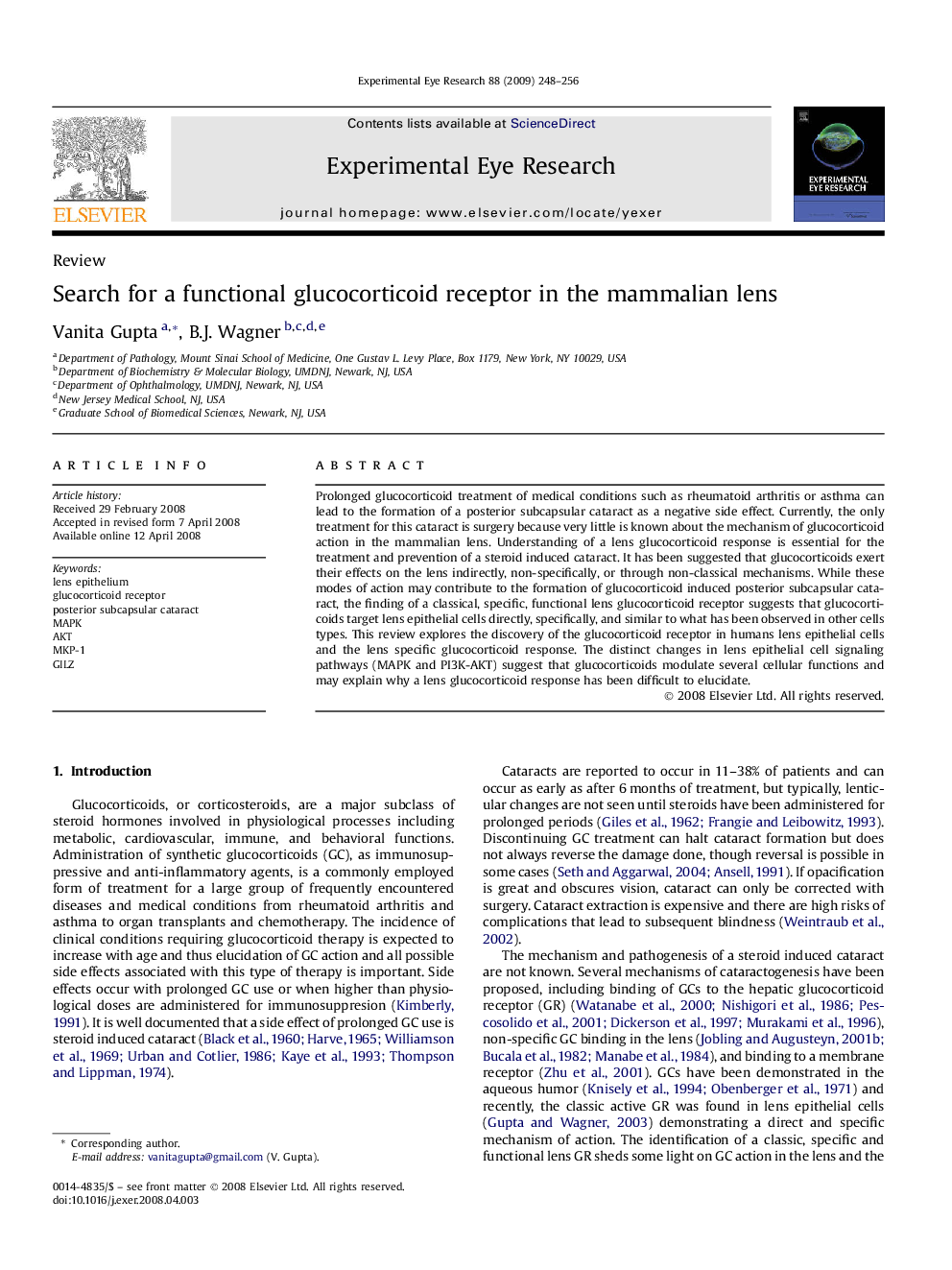| کد مقاله | کد نشریه | سال انتشار | مقاله انگلیسی | نسخه تمام متن |
|---|---|---|---|---|
| 4012113 | 1261179 | 2009 | 9 صفحه PDF | دانلود رایگان |

Prolonged glucocorticoid treatment of medical conditions such as rheumatoid arthritis or asthma can lead to the formation of a posterior subcapsular cataract as a negative side effect. Currently, the only treatment for this cataract is surgery because very little is known about the mechanism of glucocorticoid action in the mammalian lens. Understanding of a lens glucocorticoid response is essential for the treatment and prevention of a steroid induced cataract. It has been suggested that glucocorticoids exert their effects on the lens indirectly, non-specifically, or through non-classical mechanisms. While these modes of action may contribute to the formation of glucocorticoid induced posterior subcapsular cataract, the finding of a classical, specific, functional lens glucocorticoid receptor suggests that glucocorticoids target lens epithelial cells directly, specifically, and similar to what has been observed in other cells types. This review explores the discovery of the glucocorticoid receptor in humans lens epithelial cells and the lens specific glucocorticoid response. The distinct changes in lens epithelial cell signaling pathways (MAPK and PI3K-AKT) suggest that glucocorticoids modulate several cellular functions and may explain why a lens glucocorticoid response has been difficult to elucidate.
Journal: Experimental Eye Research - Volume 88, Issue 2, 2 February 2009, Pages 248–256